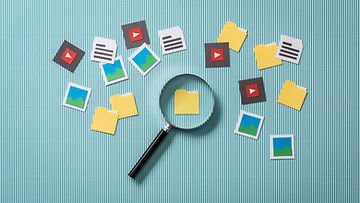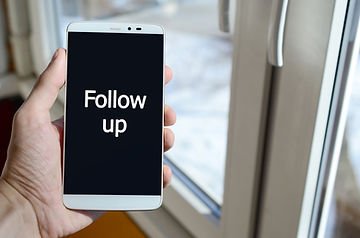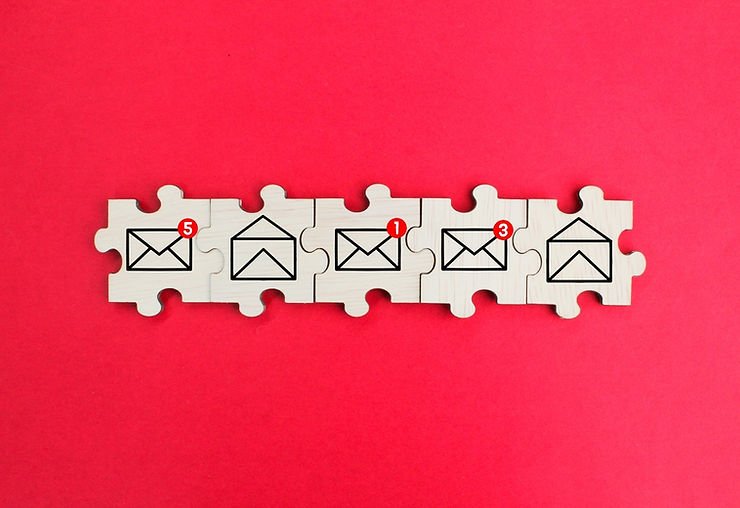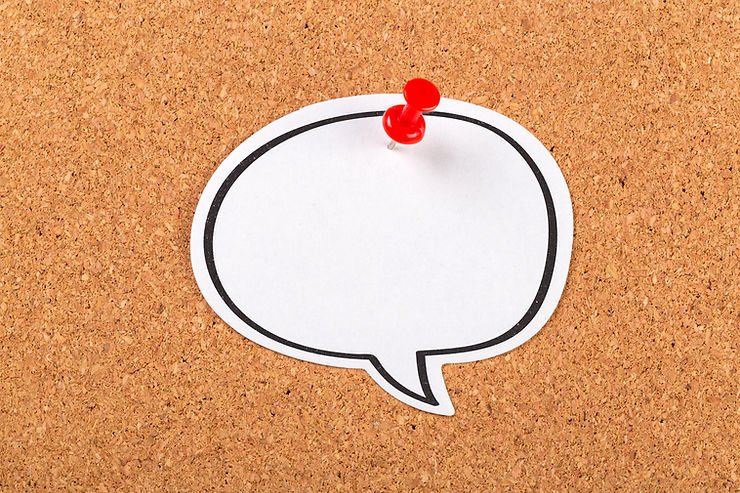The Dos and Don’ts of E-commerce Email Marketing
- DO Accurate Data Retrieval
- DO Follow Up
- DO Write Neat and Interesting Subjects
- DO Write a Simple, Targeted Email Body
- DO Email Type Selection
- DO Selection of Target Audience in Your Business
- DO Clear Goals in Your Business
- DON’T Bombard Readers
- DON’T Passively Do Promotions or Continuous Campaigns
- DON’T Use Excessive Images or Features
- DON’T Sell Customer Email Addresses
Dos
DO Accurate Data Retrieval
Email marketing is a powerful tool for businesses to reach out to their customers and promote their products or services. To make the most of email marketing, accurate data retrieval is crucial. Accurate data retrieval involves gathering relevant information about your target audience, such as their email addresses, demographic data, and purchasing behavior, and using this information to create targeted and personalized email campaigns.
The first step in accurate data retrieval is to ensure that the data you collect is accurate and up-to-date. This can be achieved through various means, such as offering incentives for customers to provide their email addresses, regularly updating your email list, and using tools like email verification software to eliminate invalid email addresses. Once you have accurate data, you can segment your audience based on factors such as their age, gender, location, interests, and past purchase behavior.
This allows you to create targeted email campaigns that are tailored to each group, increasing the chances of engagement and conversions. Additionally, regularly tracking and analyzing your email campaign performance can help you identify trends and adjust your strategy accordingly to maximize your ROI.

1. Retrieve data for email marketing by segmenting your customer data based on purchase history, browsing behavior, and engagement levels. 🎯
2. Your data might be incomplete, outdated, or incorrect, but that’s okay. You can use this as a chance to engage with your customers by asking them to provide the missing information. Send them a fun quiz or survey and offer rewards like discounts or exclusive content. 🔍
3. Data is essential for successful email marketing, but it’s important to use it responsibly. Analyze your data to find trends and growth opportunities, and keep track of metrics like open rates, click-through rates, and conversion rates. 💡
4. A cluttered database is uninviting. Keep it clean like a well-organized closet by removing inactive subscribers and outdated data. Integrate your CRM with your email platform for up-to-date and accurate data.🧹
5. Time is important in e-commerce, so use automation. Set up automated email workflows that send personalized messages based on user behavior, such as abandoned carts or product recommendations. This saves time and delivers timely, relevant, and targeted emails. 🤖
DO Follow Up
Follow-up is a critical component of e-commerce email marketing. It involves sending targeted messages to customers who have already shown an interest in your products or services, such as those who have added items to their shopping cart or signed up for your newsletter.

Follow-up emails can help to build trust, encourage engagement, and ultimately drive sales.
One effective follow-up strategy is to send abandoned cart emails. These emails are sent to customers who have added items to their cart but have not completed their purchase. The email can include a reminder of the items in their cart, along with a call to action to complete the purchase. Personalizing these emails with the customer’s name, the specific items in their cart, and even a discount code can increase the chances of conversion. Other follow-up emails can include order confirmation emails, shipping updates, and post-purchase emails that ask for feedback or provide related product recommendations. The key is to make each email relevant, timely, and valuable to the recipient.
Step right up and behold the magic of the magnificent follow-up! This email marketing trick, when performed correctly, can turn disengaged prospects into loyal customers faster than you can say “abracadabra.”
So, without further ado, let’s dive into the whimsical world of e-commerce email follow-ups.

1. Welcome to drip campaigns! Nurture subscribers with a sequence of timely, relevant emails that offer value, build trust, and keep your brand top-of-mind. From welcome emails to post-purchase check-ins, your drip campaign will keep subscribers engaged.🎢
2. 🕵️♂️ To write a captivating follow-up email, track your subscribers’ actions and interactions with your content. Analyze browsing history, cart abandonment, and previous purchases to personalize your messages and encourage conversion.
3. Make your follow-up emails exciting by including irresistible offers like exclusive discounts, limited-time promotions, or free shipping. Create urgency and excitement, but keep the element of surprise by not being predictable.🎁
4. 📬Timing is key in e-commerce follow-up emails. Use automation to send emails at the right moment based on actions like cart abandonment or product recommendations. Experiment with different send times to find the most effective one.
5. Make your follow-up emails memorable with personalization. Use your subscribers’ names, reference their past interactions with your brand, and send them content that matches their preferences. This will make your subscribers feel valued and turn your follow-up emails into a delightful experience.🎩
DO Write Neat and Interesting Subjects
Email marketing is a powerful way to communicate with your audience, but with so many emails flooding inboxes every day, it can be challenging to make your messages stand out. One of the most effective ways to do so is by crafting neat and interesting subject lines that grab the reader’s attention and entice them to open your email.
To make your subject lines neat, it’s important to keep them concise and to the point. Avoid lengthy or wordy subject lines that may get truncated on mobile devices or appear overwhelming in the inbox.
Instead, use clear, straightforward language that accurately represents the content of your email. This can help you stand out in a crowded inbox and increase the likelihood of your message being opened.

To make your subject lines interesting, you can use creativity and personalization. Consider using emojis or symbols to add visual interest, or use language that taps into the reader’s emotions, such as excitement or urgency.
Personalization is also a powerful way to make your subject lines more interesting. Addressing the reader by name or referencing their past interactions with your brand can make them feel valued and increase the likelihood of them opening your email.
Here are some examples of neat and interesting subject lines:
- “Don’t miss out on our biggest sale of the year!”
- “A special gift just for you, [Name] 🎁”
- “Last chance to save 20% on your purchase”
- “You’re invited: Join our exclusive webinar for expert insights”
- “👀 Sneak peek: New products coming soon”
DO Write a Simple, Targeted Email Body
When it comes to email marketing, the body of your email is just as important as the subject line. A well-crafted email body can keep your audience engaged and drive conversions. To create a simple, targeted email body, it’s important to understand your audience and their needs.
In the realm of electronic commerce and online marketplaces, where businesses ranging from online stores to established ecommerce companies leverage email marketing for online sales and customer engagement, the effectiveness of your email content cannot be overstated. Whether you’re just starting an ecommerce business or managing an existing one on a preferred e-commerce platform, crafting compelling email content is essential.
For businesses operating within the business to business (B2B) sphere or nurturing their own ecommerce store, the ability to connect with customers through email marketing is a valuable resource. It enables you to maintain strong customer relationships, foster brand loyalty, and promote your services online, ultimately contributing to the success of your ecommerce businesses.
Moreover, in the dynamic landscape of ecommerce, where ecommerce stores and e-commerce store owners continually strive to enhance the efficiency of e-commerce transactions, the role of email marketing becomes increasingly important. Online retail success hinges on the ability to effectively utilize e-commerce websites and online retailers as sales channels.
Businesses operating within diverse e-commerce platforms, catering to a global audience with a focus on selling online, rely on strategic email marketing campaigns to drive conversions and solidify their presence in the world of business online. This extends to businesses that incorporate a physical store presence alongside their e-commerce businesses, unifying the customer experience across their e-commerce website and business website. By harnessing the power of email marketing, businesses can maintain a cohesive brand identity, promote their products, and facilitate e-commerce transactions with ease.
Firstly, keep your message focused on a single topic or call to action.
Avoid overwhelming your audience with too much information or too many options, as this can cause them to lose interest or feel confused. Instead, identify the most important message or action you want them to take and center your email around that. Use clear and concise language to make your message easy to understand and follow.

Secondly, personalization is key to making your email body targeted and relevant.
Use the recipient’s name and reference their past interactions with your brand to make them feel valued and understood. Segmenting your email list based on their interests or behavior can also help you tailor your message to their specific needs and increase the likelihood of them taking action.
Here is an example of a simple, targeted email body:
Dear [Name],
We wanted to thank you for being a loyal customer and offer you an exclusive discount on our latest products. As someone who has shown an interest in our [Product Category], we thought you might be interested in our new [Product Name].
For a limited time, we’re offering 20% off your purchase of any [Product Name] with the code [Discount Code]. These products are selling fast, so don’t wait to take advantage of this offer.
Thank you again for your support, and we hope to see you soon.
Best regards,
[Your Name]
In this example, the email body is focused on a single call to action (to use the discount code) and is personalized to the recipient’s past interactions with the brand. The language is clear and straightforward, making it easy for the recipient to understand and follow.
DO Email Type Selection
Email marketing is a versatile tool that can be used to achieve a variety of goals, such as driving sales, building brand awareness, or nurturing customer relationships. To maximize the effectiveness of your email marketing campaigns, it’s important to select the right type of email for your specific needs and goals. One type of email is the promotional email, which is designed to promote a product or service and drive sales. These emails typically include offers or discounts and a clear call to action (such as ‘Shop now’ or ‘Claim your discount’). Promotional emails can be effective at generating immediate sales, but it’s important to avoid being too spammy, as this can turn off your audience.
In the era of shopping online, where the majority of transactions occur via mobile devices and businesses operate ecommerce stores and e-commerce sites to facilitate online transactions, the role of email marketing remains pivotal. Whether you’re employing e-commerce business models to boost your online storefront or utilizing social media marketing and search engines to expand your reach, email campaigns play a crucial role in customer engagement.
Small businesses, in particular, can benefit from strategic email marketing as it allows them to compete effectively in the online marketplace. Moreover, effective email marketing ensures the security of customer data, fostering trust and loyalty among your target audience.
Beyond promotional emails, email marketing encompasses various other types of communication that are instrumental in the e-commerce industry. For instance, transactional emails provide customers with essential information about their online shopping experience. These emails confirm orders, provide shipping updates, and offer digital receipts. They contribute to a seamless online shopping experience and are an integral part of e-commerce sales.
In the digital commerce landscape, where online marketplaces offer a plethora of digital products and businesses are continually adapting to the e-commerce industry’s growth, transactional emails play a significant role in ensuring smooth interactions with customers. Whether you are selling products through your business online or nurturing an e-commerce store, these transactional emails enhance customer satisfaction and build trust in your ecommerce businesses.
To thrive in the competitive e-commerce space, it’s crucial to harness the full potential of email marketing, combining promotional, transactional, and relationship-building emails to create a holistic strategy that drives sales and fosters long-term customer relationships
Another type of email is the newsletter, which is typically sent on a regular basis and includes updates, news, and educational content related to your brand or industry. Newsletters can help you build brand awareness and establish yourself as an authority in your field. They can also be used to promote events, products, or services in a more subtle way than a promotional email.

Here’s an example of a promotional email:
Subject: Final hours for our 25% off sale!
Dear [Name],
We wanted to remind you that our 25% off sale ends tonight at midnight. Don’t miss your chance to save on our latest collection of [Product Category]. Whether you’re looking for a new [Product Name] or a stylish [Product Name], we’ve got you covered.
Use the code [Discount Code] at checkout to claim your discount. And remember, all purchases come with free shipping and a 30-day satisfaction guarantee.
Thank you for your continued support, and happy shopping!
Best regards,
[Your Name]
And here’s an example of a newsletter email:
Subject: May newsletter: The latest news from [Your Brand]
Dear [Name],
Welcome to the May edition of our monthly newsletter. In this issue, we’re excited to share updates and news about [Your Brand]. Here are some highlights:
- Introducing our new [Product Name]: [Product Description and image]
- Our CEO’s insights on the future of [Your Industry]
- A spotlight on our recent partnership with [Partner Name]
- Tips for [Related Topic] from our expert team
We hope you enjoy this month’s newsletter and find the content valuable. As always, if you have any feedback or suggestions, we’d love to hear from you.
Best regards,
[Your Name]
DO Selection of Target Audience in Your Business
Target audience selection is a critical aspect of any successful marketing campaign. By identifying and understanding your ideal customer, you can tailor your messaging, offers, and channels to reach and resonate with them more effectively. To select your target audience, it’s important to consider factors such as demographics, psychographics, and behavior. Demographic factors such as age, gender, location, and income can provide insights into the basic characteristics of your audience. Psychographic factors such as personality, values, and interests can help you understand the motivations and preferences of your audience. Behavioral factors such as purchase history, website visits, and email engagement can provide insights into how your audience interacts with your brand and what actions they are likely to take.
To identify your target audience, start by analyzing your existing customer data and creating buyer personas that represent your ideal customers. These personas should include information such as their demographics, psychographics, and behaviors, as well as their pain points, needs, and desires. Use this information to tailor your messaging and offers to their specific needs and preferences.

Here’s an example of a target audience selection for a fashion retailer:
Demographics: Women aged 18-35, living in urban or suburban areas, with a moderate to high income.
Psychographics: Fashion-conscious, interested in sustainability and ethical fashion, active on social media, values experiences over possessions.
Behavior: Has made a purchase from our website or physical store, engages with our social media content, signs up for our email newsletter.
Using this information, the fashion retailer can tailor their messaging, offers, and channels to reach and resonate with their ideal customers. For example, they could create social media content that showcases their sustainable and ethical fashion practices, offer personalized recommendations based on past purchase history, and send targeted email campaigns that highlight new arrivals and promotions.
DO Clear Goals in Your Business

Clear goals are critical to the success of any business. Without clear goals, it can be difficult to measure progress, make informed decisions, and prioritize actions. To set clear goals for your business, it’s important to consider both short-term and long-term objectives, as well as metrics for tracking progress and success. Short-term goals are typically focused on immediate outcomes, such as increasing sales or improving customer satisfaction. Long-term goals, on the other hand, are focused on achieving a larger vision or mission for the business, such as expanding into new markets or becoming a leader in the industry.
To set clear goals, start by identifying your business’s vision and mission. This can provide a guiding framework for your goals and help ensure they are aligned with your overall strategy. Then, break down your goals into specific, measurable, achievable, relevant, and time-bound (SMART) objectives. This can help you track progress and make adjustments as needed.
Here’s an example of clear goals for a software company:
Short-term goal: Increase software sales by 10% within the next quarter.
- Objective: Launch a targeted email marketing campaign for existing customers and leads.
- Metric: Track email open rates, click-through rates, and conversion rates.
Long-term goal: Become a leading provider of software solutions in the healthcare industry within the next five years.
- Objective: Expand into the healthcare market by partnering with industry leaders and developing customized solutions.
- Metric: Track market share and revenue growth in the healthcare industry.
By setting clear goals and objectives, the software company can focus its efforts and resources on specific outcomes and measure progress toward its larger vision for the business.
Don’ts
DON’T Bombard Readers

Email marketing has the potential to be an incredibly effective means of engaging with and communicating with your target audience. However, it is essential to remain cognizant of both the frequency of your email communications and the nature of the content you’re sharing. Overwhelming readers with an excessive number of emails, especially those containing information that is irrelevant, repetitive, or lacking in value, can have unintended negative consequences on your marketing efforts. Sending too many emails in a short period may cause recipients to feel bombarded, ultimately leading to your messages being flagged as spam or, worse, prompting readers to unsubscribe from your mailing list altogether.
When subscribers mark your emails as spam or opt to unsubscribe, not only do you lose the opportunity to communicate with those individuals, but it also damages your sender’s reputation, which can adversely affect future email deliverability. High unsubscribe rates and spam complaints may signal to email service providers that your content is not valued by recipients, which in turn can lead to a lower sender score and the possibility of your emails being filtered out or relegated to the spam folder. Consequently, your marketing efforts may become less effective, with your messages failing to reach your intended audience.
Instead, focus on creating targeted, valuable content and sending it at an appropriate frequency, so that your subscribers feel informed and valued rather than overwhelmed.
Case Study:
Imagine you run an online clothing store, and you have a new line of summer dresses coming out soon. Instead of sending daily emails announcing the new arrivals, you could send a well-crafted, informative email at the beginning of the week with a teaser of the new line and a special discount for subscribers. Later in the week, you might follow up with another email featuring a few top picks, along with styling tips and customer reviews. By providing value in your emails and spacing them out, you can keep your subscribers engaged and interested without bombarding them.
DON’T Passively Do Promotions or Continuous Campaigns

In email marketing, it’s absolutely critical to steer clear of a passive approach when it comes to promoting your products or services and implementing ongoing campaigns. Merely sending out bland, run-of-the-mill promotional emails or perpetually executing campaigns without a well-defined strategy, engaging content, or a clear call-to-action can result in your readers losing interest and becoming disengaged, ultimately leading to a decline in conversion rates and diminished marketing success.
A passive email marketing approach lacks the necessary intention and thoughtfulness required to genuinely connect with your audience, making it difficult for your subscribers to see the value in the content you’re sharing. This, in turn, can lead to a decrease in open and click-through rates, as well as an increase in unsubscribe rates, as readers are more likely to feel overwhelmed or bombarded by uninspired, monotonous content. By not putting in the effort to create meaningful and personalized email campaigns, businesses risk alienating their subscribers and losing potential customers, thereby hindering their growth and overall marketing effectiveness.
To make your email marketing efforts more effective, focus on creating engaging, personalized content, and tailor your promotions and campaigns to suit your audience’s needs and preferences. By doing so, you’ll foster a stronger connection with your subscribers, and encourage them to take the desired action.
Case Study:
For instance, let’s say you run a fitness center, and you’re offering a limited-time membership discount. Instead of sending out a generic email with the promotion details, create a series of targeted emails with a clear call to action. The first email could include a personal story from one of your satisfied members, highlighting the benefits of joining your fitness center. The next email could feature a video tour of the facility, showcasing the state-of-the-art equipment and friendly staff. Finally, a third email could provide an exclusive, time-sensitive discount code for subscribers, emphasizing the urgency of the promotion. By actively engaging your audience through thoughtful, targeted content, you’ll improve the chances of turning subscribers into customers and achieving your marketing goals.
DON’T Use Excessive Images or Features

In email marketing, it’s essential to strike a balance between visual appeal and functionality. While using images and features can enhance your message and make your emails more engaging, excessive use of these elements can have negative effects. Overloading your emails with images or complex features may lead to slow loading times, difficulty in viewing the content across different devices and email clients, and may even distract readers from the main message or call-to-action. Additionally, some email clients may block images by default, rendering your visually-heavy email ineffective.
To ensure optimal user experience, focus on simplicity, responsiveness, and compatibility across various platforms.
Case Study:
If you run a travel agency and you want to promote a vacation package, you might be tempted to include numerous high-resolution images of the destination, along with intricate design elements. However, this can overwhelm readers and detract from the main message. Instead, opt for a cleaner, more streamlined design. Begin with a captivating subject line and a brief, compelling introduction. Then, include a few carefully selected, optimized images that showcase the beauty of the destination, followed by a clear call-to-action, such as “Book Now” or “Learn More.” Additionally, ensure your email template is mobile-friendly and responsive to cater to subscribers who access their emails on various devices. By adopting a more balanced approach to visuals and features, you can create emails that effectively communicate your message and resonate with your audience.
DON’T Sell Customer Email Addresses

Selling or sharing customer email addresses without their consent is a highly unethical practice in email marketing and is a surefire way to lose credibility and trust among your subscribers. Not only does it violate the privacy and expectations of your customers, but it can also lead to legal ramifications, as data protection regulations such as GDPR (General Data Protection Regulation) and CCPA (California Consumer Privacy Act) enforce strict rules on handling and sharing personal information.
Respecting your customers’ data privacy is crucial to maintaining a positive relationship with your audience and upholding your brand’s reputation.
Case Study:
Imagine you run an online bookstore and have built a substantial mailing list of customers who have subscribed to receive updates on new book releases and discounts. Instead of selling or sharing this valuable list with other businesses for quick monetary gain, focus on cultivating a strong relationship with your subscribers by providing them with relevant content, personalized recommendations, and exclusive offers. Demonstrating a commitment to protecting your customers’ data and prioritizing their interests will enhance their trust in your brand, leading to increased customer loyalty and long-term business success. Always remember that your subscribers have chosen to receive emails from your business specifically, and it’s your responsibility to respect their privacy and deliver value through ethical email marketing practices.
The more times change, the wider the development of the world of e-commerce. Email marketing is not taboo, but has become a priority in business and sales. Find other benefits of Email Marketing with us. Join now!

